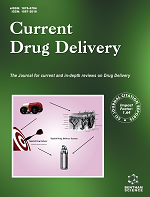-
s Self-Assembled Tocopherol-Albumin Nanoparticles with Full Biocompatibility for Chemo-photothermal Therapy against Breast Cancer
- Source: Current Drug Delivery, Volume 19, Issue 1, Jan 2022, p. 49 - 63
-
- 01 Jan 2022
Abstract
Background: The combination of photothermal therapy (PTT) and chemotherapy has proven to be a promising strategy for cancer treatment. Various nanomaterials have shown great potential in combination therapy, including gold, graphene oxide, iron oxide, and other nanoparticles. However, their undefinable toxicity in vivo greatly slowed down their development for clinical applications. Objective: The present work aimed to develop a multifunctional nanoparticle for chemo-photothermal therapy composed of acknowledged biocompatible materials. Methods: A novel biocompatible nanoparticle (HIT-NPs) was self-assembled through the intrinsic interaction between D-α-tocopherol Succinate (TOS), human serum albumin (HSA) and indocyanine green (ICG). Doxorubicin (DOX) was then loaded due to the ion pairing between DOX and TOS. The feasibility of combined chemo-photothermal therapy induced by DOX-loaded HIT-NPs was carefully evaluated. Results: In vitro, HIT-NPs showed no cytotoxicity on human normal liver cells (HL-7702 cells) but obvious killing effects on murine breast cancer cells (4T1 cells). The combined chemo-photothermal therapeutic effect on 4T1 cells was successfully obtained. DOX-loaded HIT-NPs could effectively accumulate in 4T1 subcutaneous tumors after intravenous injection, and the tumor temperature rapidly increased under laser exposure, indicating the feasibility of PTT in vivo. Conclusion: The self-assembled HIT-NPs could provide a promising platform for combined chemo- photothermal cancer therapy with full biocompatibility.


